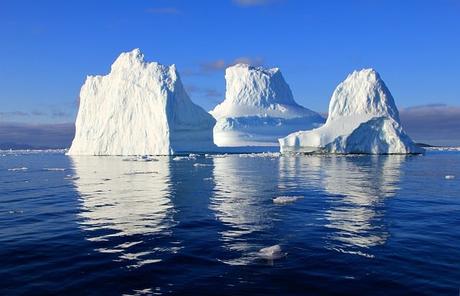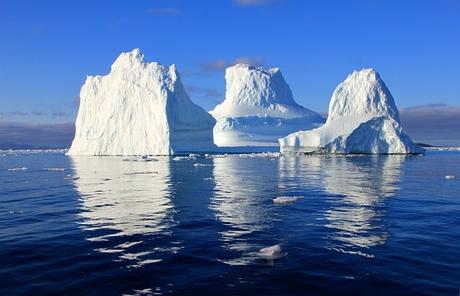Climate change-driven blue skies pushed Greenland ‘into the red,’ and along with high temperatures, it played a vital role in the melting seen in Greenland last year. A record number of cloud-free days was the reason that more sunlight hit the surface while snowfall was also reduced, scientists found in a study.
The wobbles in the fast-moving jet stream air current that also trapped heat over Europe have led to these conditions.

As a result, an estimated 600 billion tonnes of ice sheets lost in Greenland.
According to the authors, current climate models don’t include the impact of the meandering jet stream and may be underestimating the warming effect.
Last December, researchers reported the melting of Greenland’s ice sheet seven times faster than it had been during the 1990s. The area of Greenland’s ice sheet is seven times the UK and somewhere up to 2-3km thick. If the whole thing melted, the frozen water it stores would raise sea levels worldwide by up to 7m.
The recent analysis of last year’s melting disclosed that the 600 billion tonnes of ice added 2.2mm to global sea levels in two months only.
As per this new study, while rising global temperatures played a role in the last year’s events, the changes in atmospheric circulation patterns were also behind it.
The high-pressure weather conditions were prevailing over Greenland for record amounts of time, researchers found.
Researchers believe this is connected to the term “waviness” in the jet stream, the giant air current that mostly flows around the globe from west to east.
The current bends north when it becomes more wobbly, and high-pressure systems become “blocked’ over Greenland that would otherwise frequently move through in a few days.
The impacts of these systems were different depending on the part of Greenland you were staying in.
It caused clearer skies with more sunlight hitting the surface in the southern part of the island, the authors say.
The days free of cloud brought less snow, which meant ice added to the ice sheet was 50 billion tonnes fewer.
The bare, dark ice in someplace was exposed in the absence of snow, which also absorbed more heat contributing to the melting.
The rest of Greenland had different but equally damaging impacts due to the changing atmospheric patterns.
The northern and western regions witnessed the swirling but stuck high-pressure systems that pulled in warm air from southern latitudes.
“You can imagine that a sort of vacuum cleaner that is spinning clockwise and sucking all the warm and moist air from New York City for example,” said lead author Dr Marco Tedesco from Columbia University in New York, US.
“And because of the rotation, it deposits this warm, moist air high in the northern part. It forms clouds, and they behave like a greenhouse, trapping the heat that would normally radiate off the ice.”
Dr Tedesco explained that in 2019, Greenland experienced the largest drop in surface mass balance since records began in 1948.
The surface mass balance means the overall state of the ice sheet after considering both gains from snowfall and losses from surface melt-water run-off.
Although 2019 was not as warm as 2012, why last year produced a record drop in surface mass balance, the authors believe their study explains.
The authors believe their study explains why “This is really pushing Greenland into the red,” said Dr Tedesco.
The new paper is a good explanation of what happened last year in Greenland, other researchers working in this field also agreed.
“The main message of the paper is that the very high melt was mostly driven by clear skies and direct melting rather than necessarily being attributable to unusually high temperatures over the ice sheet – a radiatively-driven, rather than thermally-driven, melt season as they put it,” said Dr Ruth Mottram, a climate scientist at the Danish Meteorological Institute in Copenhagen.
“In some ways, the weather pattern is rather similar to the great blocking high that lodged over Scandinavia for weeks in 2018, giving us the most extreme drought on record in much of northern Europe.”
The exact mechanism behind the climate change affecting the jet stream is yet to understand. However, the opinion is, with the warming of the Arctic, the differences in temperature between the region and the mid-latitudes that drive the air current, are reduced. It slows down the stream, and it wanders further.
“The more CO2 we pump out, the more divergence starts to emerge between the behavior of the Arctic and the mid-latitudes, and this behavior is accelerating and enhancing some of the differences. It is a crucial part of what is creating this waviness and the consequences,” said Dr Tedesco.
The climate models, in general, need to consider this impact of the wavy jet stream, the authors argue. Others in the field say this issue needs addressing.
“These results imply that the climate models we use for future projections of sea level rise from Greenland are underestimating the extreme years at present and therefore likely also the rate at which the ice sheet melts and the oceans will rise in the future,” said Dr Mottram.
“The only ray of light is that as processor power increases and we can do higher resolution simulations with climate models, the representation of these processes does seem to improve and not just in Greenland but in other areas of the world where persistent blocking patterns can have an important influence on the season.”
The study has been published in the journal The Cryosphere.


